The Maeda Clan’s Legacy, Kenrokuen Garden, and Translucent Gold Leaf
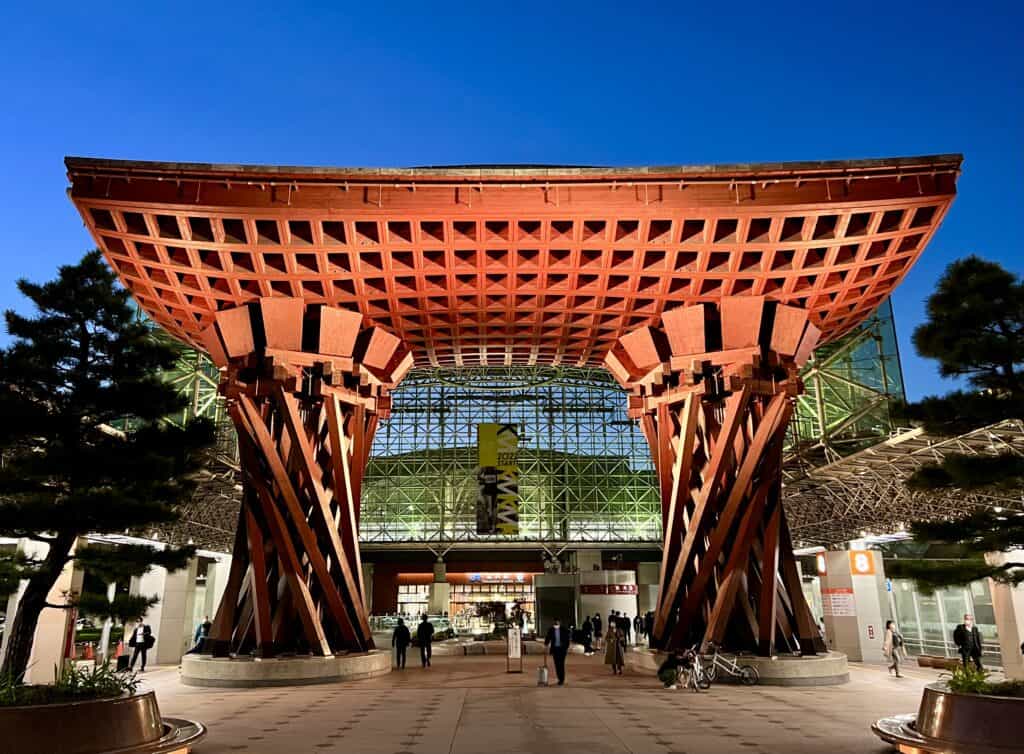
Kanazawa is the capital of Ishikawa Prefecture, about midway up the western coast of Honshu. The name Kanazawa, meaning “marsh of gold,” is said to have come from a story of a man who washed gold dust from freshly dug potatoes into a well. Today, the Kinjo Reitaku well, where those gold-dusted potatoes were rinsed, is located on the grounds of Kenrokuen Garden and stands as a reminder of the city’s golden legacy.
Kanazawa’s history dates back approximately 500 years to the Kaga Ikkō-ikki, a 15th-century conflict between the ruling samurai class and the Ikkō, militant followers of Jōdo Shinshū (True Pure Land Buddhism). This diverse group, which included monks, priests, townspeople, and farmers, emerged victorious and established Kanazawa as “The Peasants’ Kingdom.” Free from samurai rule, the government of Japan’s sole Buddhist fiefdom was based at Kanazawa Mido, a temple complex built in the mid-16th century on what is now the grounds of Kanazawa Castle.
“The Peasants’ Kingdom” came to a sudden end in 1580 when Oda Nobunaga’s forces, led by Shibata Katsuie and Sakuma Morimasa, stormed into the city. Following the conquest, Nobunaga gave Morimasa control of Kaga Province.
However, after Nobunaga’s death in 1582, Toyotomi Hideyoshi reassigned the province to Maeda Toshiie, a wise and accomplished samurai general. Toshiie’s ceremonial entry into Kanazawa on June 14, 1583, marked the start of the modern development of Kanazawa. The Maeda clan built Kanazawa Castle on the former site of the Mido temple, and they transformed the surrounding temple town into a new castle town.
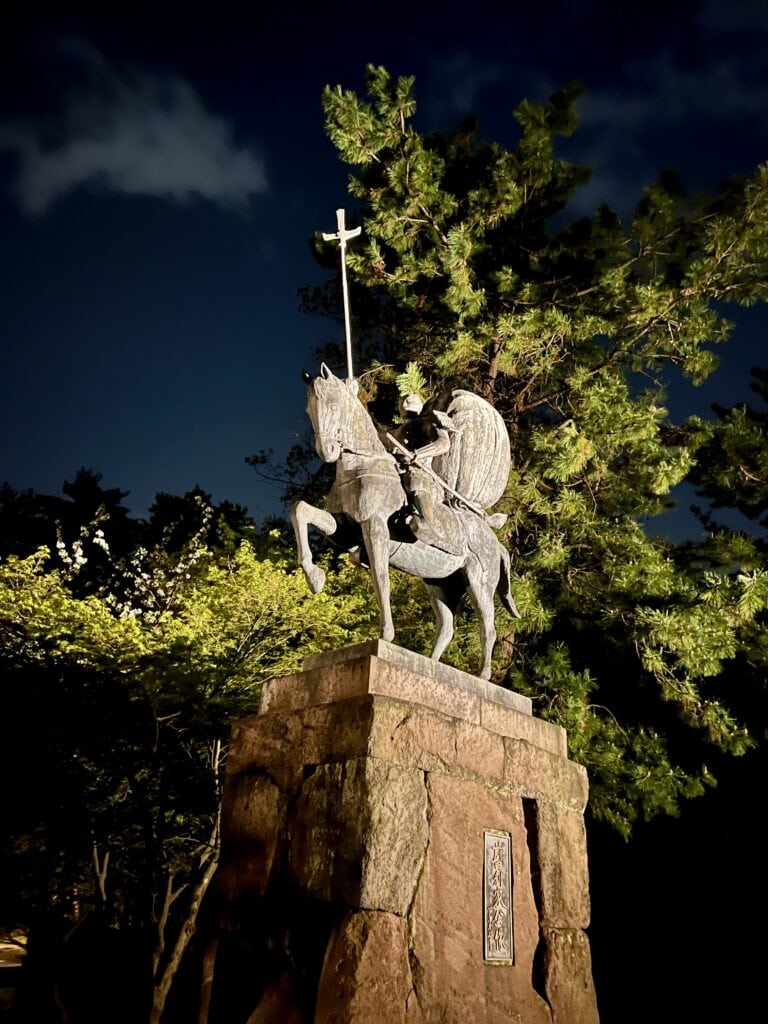
For 285 years, the Maeda clan governed Kaga Province, present-day Ishikawa and Toyama Prefectures. One of the largest domains of the Edo period, Kaga had a rice yield of approximately 1.2 million koku—enough to support an army of 1.2 million men, as one koku (150 kilograms/331 pounds) was considered the amount needed to feed one man for a year. This vast yield made the Maedas the wealthiest feudal lords of the Edo period after the Tokugawa shoguns. Under the Maeda clan’s benevolent rule, Kanazawa flourished as their political, economic, and cultural center, and became one of Japan’s leading castle towns.
The third lord of Kaga, Maeda Toshie’s son Toshitsune, was the first to transport his rice taxes, 100 koku, by ship southwest around Honshu and up to Osaka, laying the foundation for what was to become the Kitamaebune trade route. He also led the largest contingent to support Tokugawa Ieyasu during the siege of Osaka in 1615. Following their victory over the Hideyoshi clan, Ieyasu offered Toshitsune the island of Shikoku in exchange for his Kaga domain. Toshitsune declined, and we can be glad he did.
The city developed around Kanazawa Castle, which shaped the layout of its streets, neighborhoods, gardens, and sophisticated water systems. Many Buddhist temples were relocated to the city’s outskirts to act as defensive perimeters, while Ikkō temples—historically linked to rebellious activities—were moved within the town for closer supervision. To mitigate the risk of uprisings, non-Ikkō temples were strategically placed to oversee the Ikkō sect temples.
The Maeda lords prioritized culture and education over military strength. They invited scholars and master artisans from across Japan, fostering the development of Kutani ware ceramics, lacquerware, metal casting, tea ceremony, Noh theater, and the geisha arts. This cultural patronage extended beyond the samurai elite, touching the lives of townspeople and granting them access to a level of sophistication rarely available in other regions.
By the late 19th century, Kanazawa had become Japan’s fourth-largest city, following Tokyo, Osaka, and Kyoto. However, the Meiji Restoration of 1868 shifted the political landscape, stripping the Maeda clan of power and centralizing authority in Tokyo. As Japan modernized, attention and resources were increasingly focused on the growing metropolises of Tokyo, Osaka, and Nagoya. As Kanazawa was left behind, its economy declined, threatening the continuation of its once-flourishing traditional crafts and cultural practices. Yet, its craftsmen and artisans carried on.
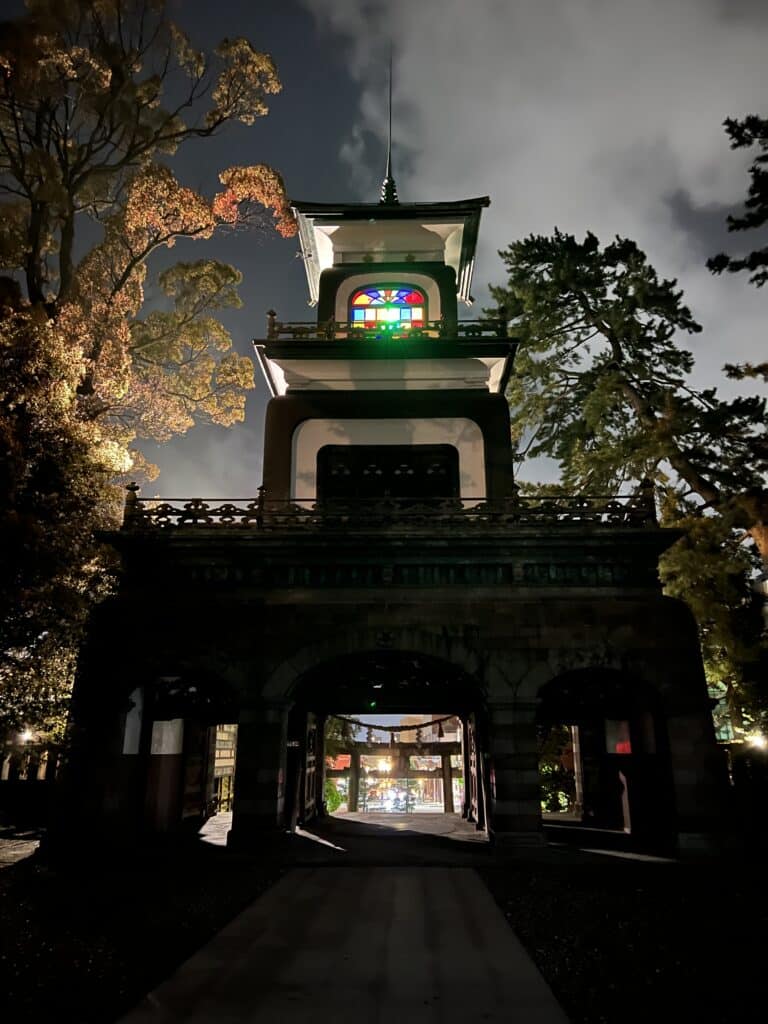
During the 20th century, Kanazawa was spared the devastation of World War II largely due to its limited industrial and military importance and its somewhat isolated position on Japan’s west coast. This fortunate outcome, combined with the city’s peaceful history under the Maeda clan during the Edo Period and its relative lack of natural disasters, has allowed entire districts of Edo-era architecture to survive intact.
In the post-war era, as Japan underwent rapid economic growth and globalization, Kanazawa drew on its rich cultural and intellectual heritage to merge its traditional crafts with contemporary art, nurturing a new creative cultural industry. This dedication to preserving and evolving its artistic legacy earned Kanazawa recognition as a UNESCO City of Crafts and Folk Art in 2009. The relocation of the National Crafts Museum from Tokyo to Kanazawa in 2020 further underscored this status.
The legacy of the Maedas’ investment in the arts remains evident today. Kanazawa is well-known for its traditional crafts, including gold and silver leaf work, lacquerware, ceramics, and silk production, as well as its performing arts, such as Noh theater and geisha.
Kenrokuen, One of Japan’s Three Great Gardens
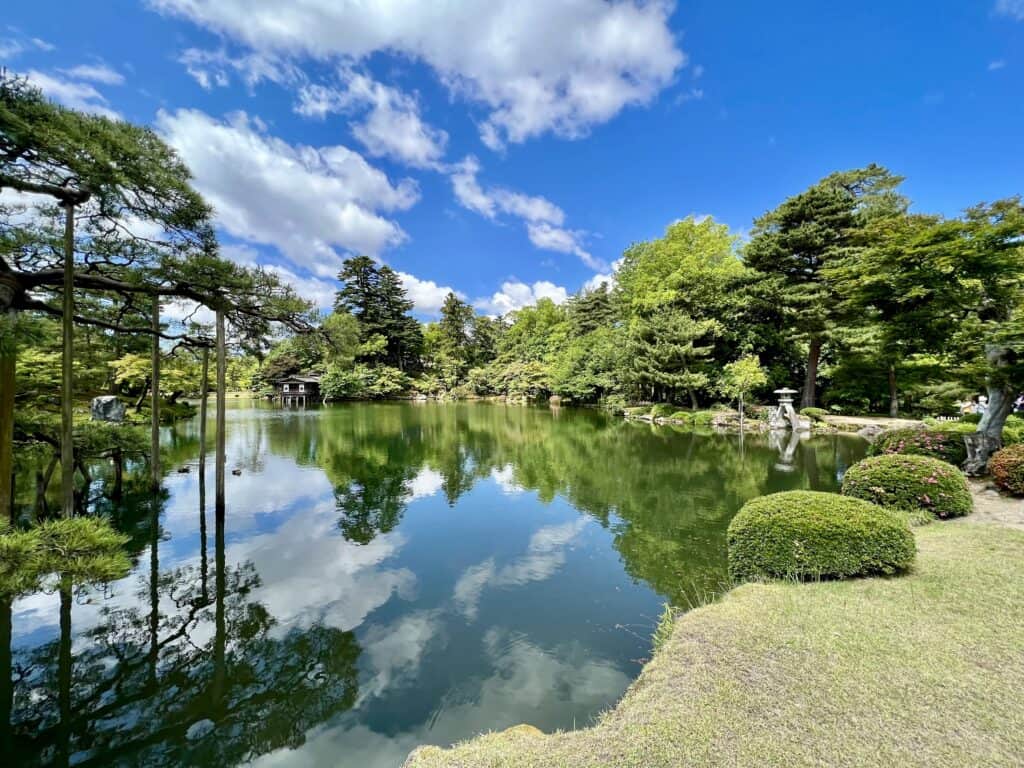
Japan has a well-known affection for “Three Greats,” a cultural quirk I’ve written about before. Tracing back to at least 1899, a beautiful example is the Three Great Gardens—Kairakuen in Mito, Kōrakuen in Okayama, and Kenrokuen in Kanazawa.
Each of these Three Greats is a strolling garden created by feudal lords near their castles in the early Edo era. One theory as to why those gardens were chosen is linked to the classic imagery of “snow, moon, and flowers” (雪月花). Kairakuen (偕楽園), famed for its 3,000 plum trees, evokes flowers (花). The stillness of the pond in Kōrakuen (後楽園) mirrors the moon (月). And Kenrokuen (兼六園) dazzles with the snow-draped beauty of its trees supported by yukitsuri (雪).
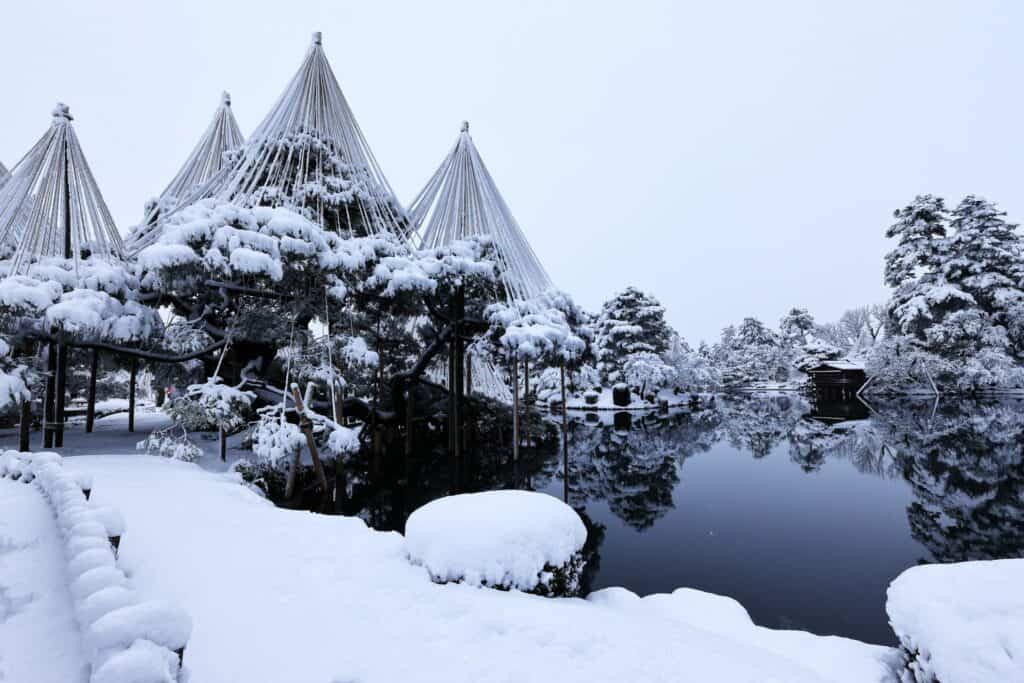
Kenrokuen, the jewel of Kanazawa, covers 114,436 square meters and has been open to the public since 1874. Its story began in 1676 when Maeda Tsunanori, the 5th lord of the Kaga Domain, laid the foundations with a landscape garden called Renchitei. A fire destroyed it in 1759, but the family restored it by 1774. In 1822, its name was changed to Kenrokuen, meaning “Garden of Six Elements,” a nod to a classical Chinese poem that elucidates the six contrasting qualities of an ideal garden: vast space, quiet seclusion, human artistry, timeless elegance, flowing water, and sweeping vistas. The poem suggests that uniting all six is nearly impossible—yet a walk through Kenrokuen proves otherwise.
As you wander its paths, these elements unfold naturally. The garden’s oldest fountain, Japan’s first powered by natural water pressure, marries human ingenuity with the rush of flowing water, its height rising and falling with the level of the nearby pond from which its stream flows. The terrain shifts subtly from secluded resting spots to sudden, expansive views, like the Kasumigaike pond that reflects the surrounding greenery and sky.
When the haiku poet Matsuo Basho visited Kanazawa in 1689 he left the following, now inscribed in stone:
あかあかと、日はつれなくも、秋の風
bright red burning
bitter sun…
but autumn in the wind
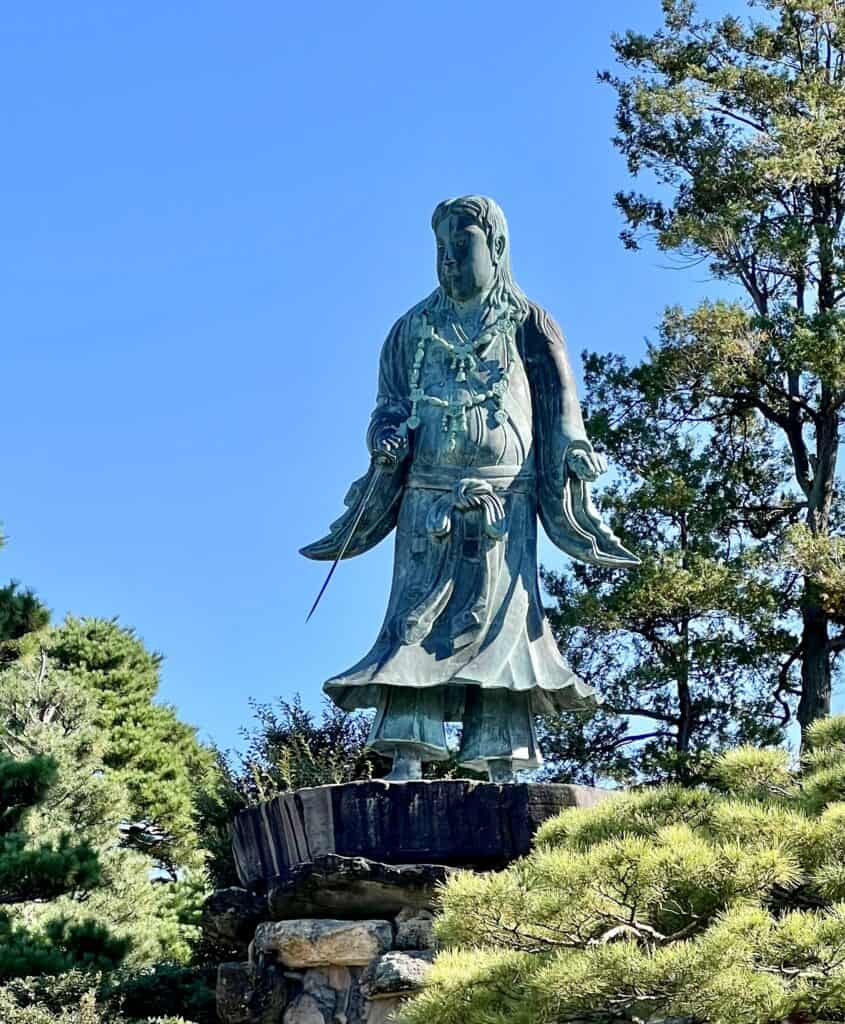
A small war memorial in the park, the Meiji Memorial, was erected in 1880 to honor 400 soldiers from Ishikawa Prefecture who lost their lives quelling a rebellion in southern Kyushu. The statue is cast in the form of the mythical hero Yamato Takeru, who, according to ancient legend, also suppressed a rebellion in Kyushu.
Gold Leaf
Gold leaf production in Kanazawa began in the late 16th century under the rule of the Maeda clan. While the Maeda actively promoted this art, their ambitions were curtailed by the Shogunate, which confined gold leaf production to designated regions like Edo and Kyoto. It wasn’t until these restrictions were lifted following the Meiji Restoration in the late 19th century that Kanazawa’s gold leaf industry blossomed into a public art form.
The process of creating gold leaf is both intricate and labor-intensive. It begins with a gold alloy—blended with traces of silver and copper—rolled into thin sheets by a mill. These sheets are then placed between layers of hakuuchi-gami, a handmade washi paper essential to the process. To make this paper, white washi is soaked in a brew of straw-ash lye, hot water, egg white, and persimmon tannin, then dried and pounded for three months until it becomes a smooth, durable, brownish sheet. The paper’s quality determines how thinly and uniformly the gold can be stretched.
The gold alloy is sandwiched between sheets of bound hakuuchi-gami, and machine-pounded for three days until it reaches an astonishing thinness of 0.0001 millimeters—so thin the gold leaf becomes translucent. Kanazawa produces 99% of Japan’s gold leaf and all of its silver and platinum leaf. Known collectively as Kanazawa haku, these delicate sheets are a shining example of the city’s traditional handicrafts.
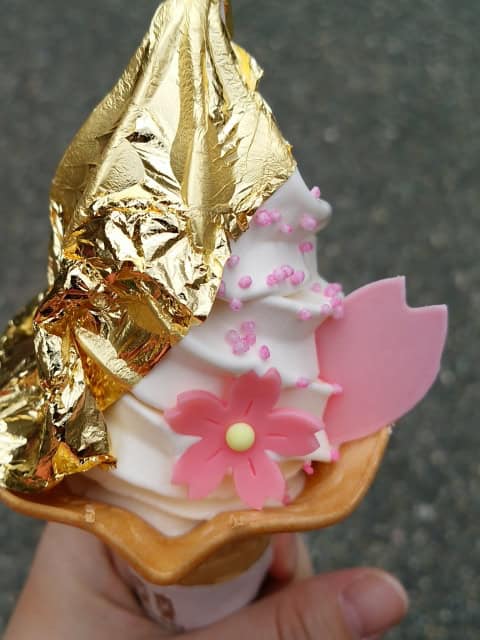
I could go on about the wonders of Kanazawa—three geisha districts where working geiko bring history to life; the breathtaking garden behind Oyama Shrine and another in the Nomura Samurai House; the world-class museums; the Noh theater; and the bustling Omicho Market running over with fresh seafood and energetic merchants. It’s no wonder that Kanazawa is one of my favorite cities. The lingering influence of the Maeda clan radiates through its prosperity, timeless traditions, and continually evolving arts. I hope you will one day have the chance to experience this beautiful city.
If you have questions about Japan or suggestions for articles, please add them in the comments. For more photos and information on Japan, follow me on instagram at: https://www.instagram.com/more_than_tokyo/




